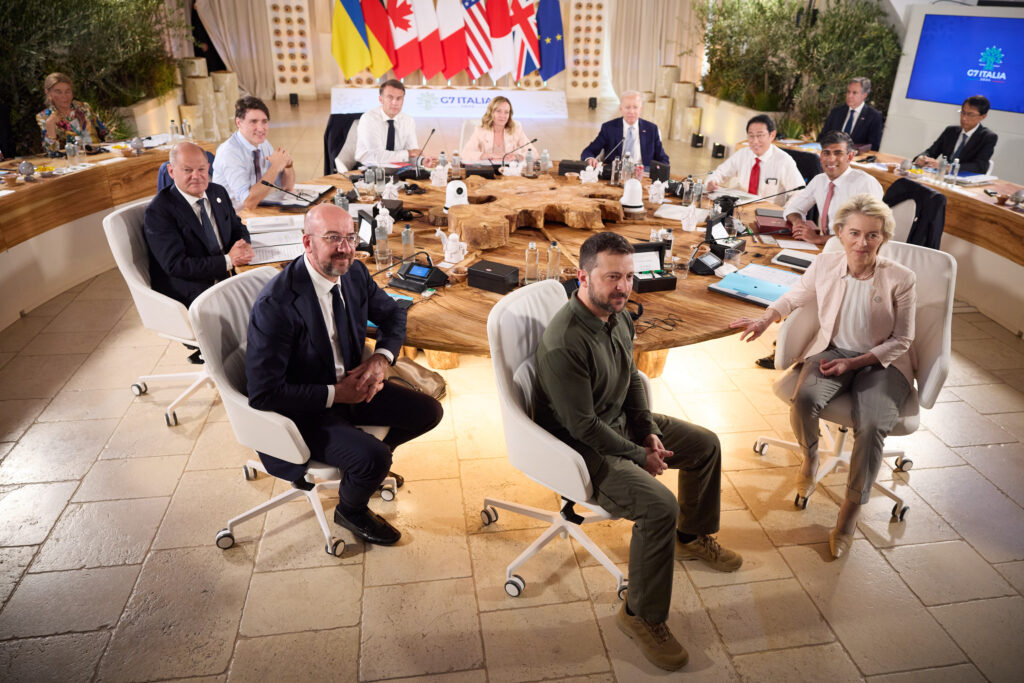From Russia, with interest. The Group of Seven (G7) leaders announced Thursday that they had agreed on a plan to send fifty billion dollars to Ukraine in the coming months by pulling forward interest income on Russian assets that had been immobilized in Western countries since February 2022 (a novel idea that Atlantic Council research helped shape ). Combined with the announcement of a bilateral security deal with the United States, Ukrainian President Volodymyr Zelenskyy took home significant wins from joining the summit of the world’s democratic economic heavyweights along Italy’s Adriatic coast.
Below, our experts dig into the details on how these agreements came together and how they might reshape the conflict. Click to jump to an expert analysis: John Herbst: Putin’s bad late spring continues Charles Lichfield: The beauty of compromise Daniel Fried: After some wobbling, this was a week of solid Western backing for Ukraine Rachel Rizzo: Amid G7 political uncertainty, Meloni is emerging as a bulwark of support for Ukraine Ian Brzezinski: The US-Ukraine security deal can’t just be a bridge to indefinite NATO delay Kimberly Donovan: New US sanctions are already impacting Russia—will China feel them too? Putin’s bad late spring continues Good news arrived from Italy today because of the superb work of the Biden administration. The G7 finally agreed to Deputy National Security Advisor Daleep Singh’s ingenious initiative to offer Ukraine this year a fifty-billion-.

















